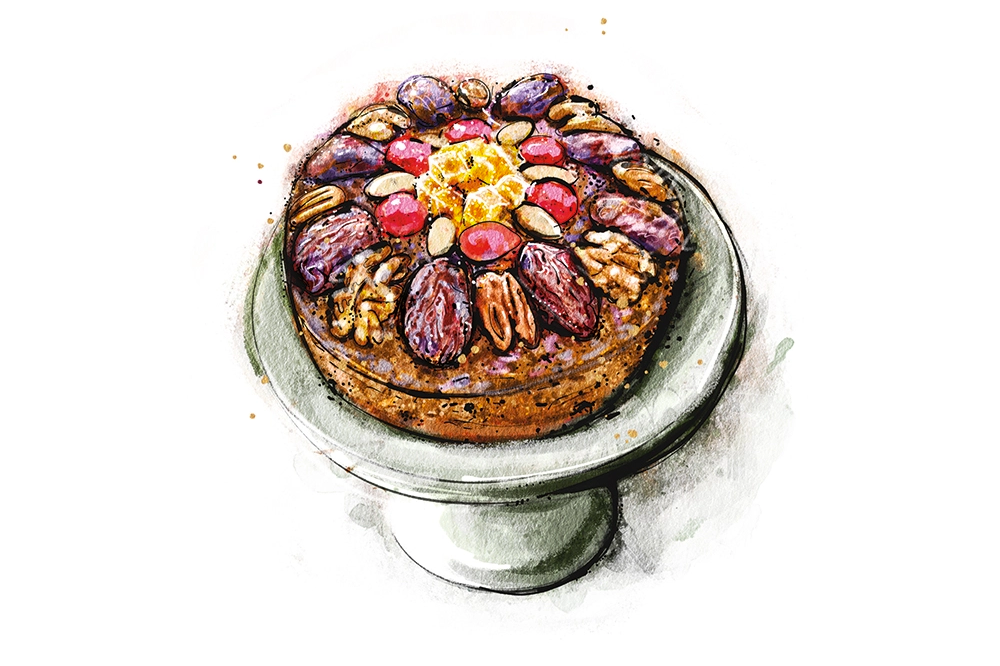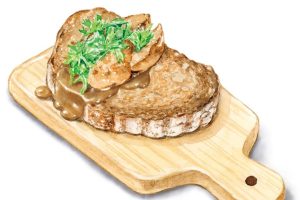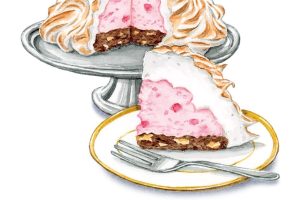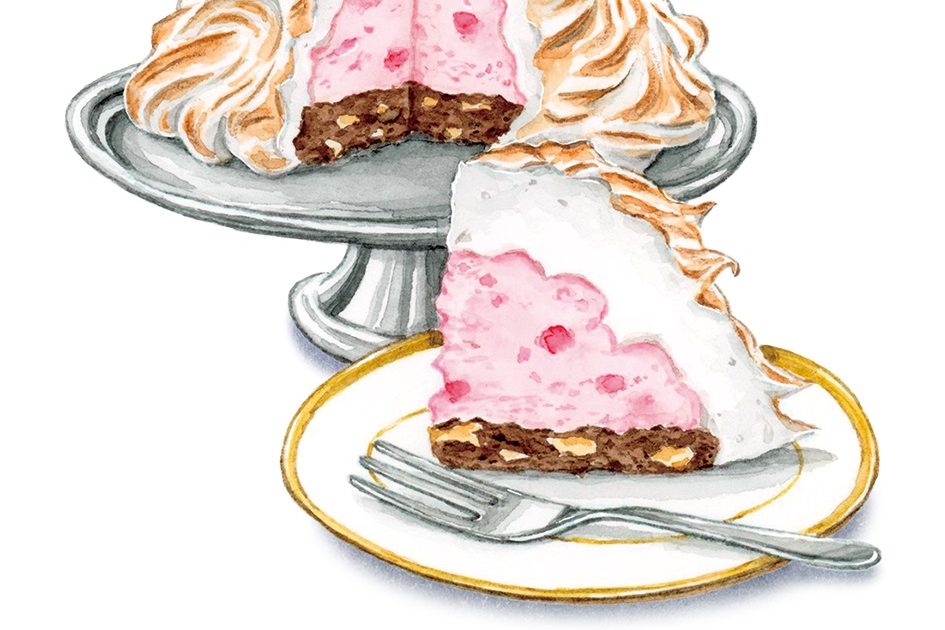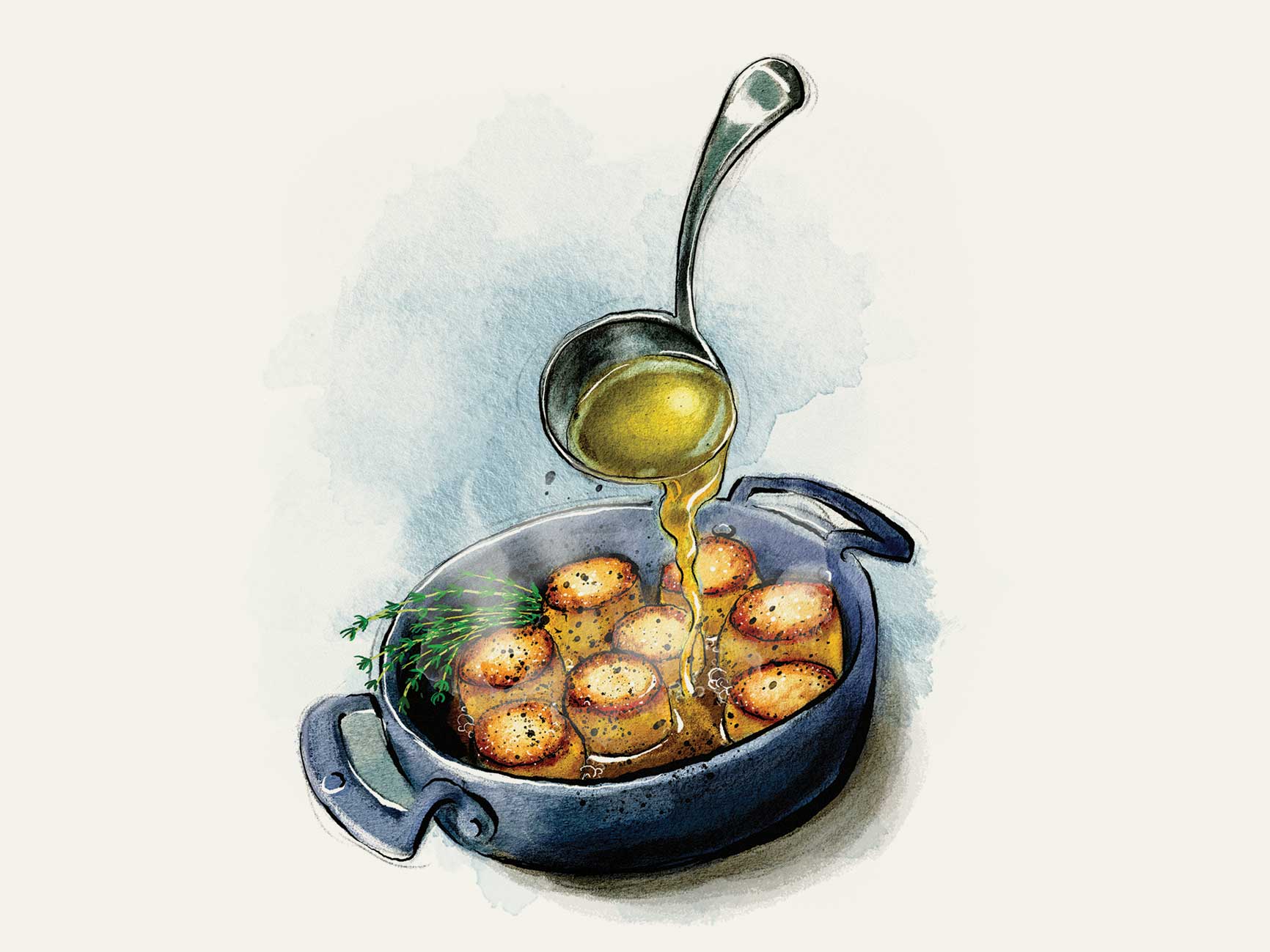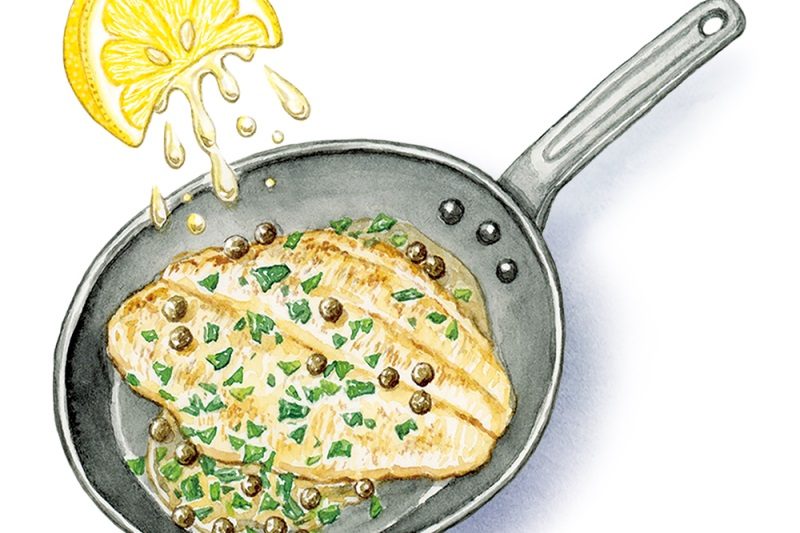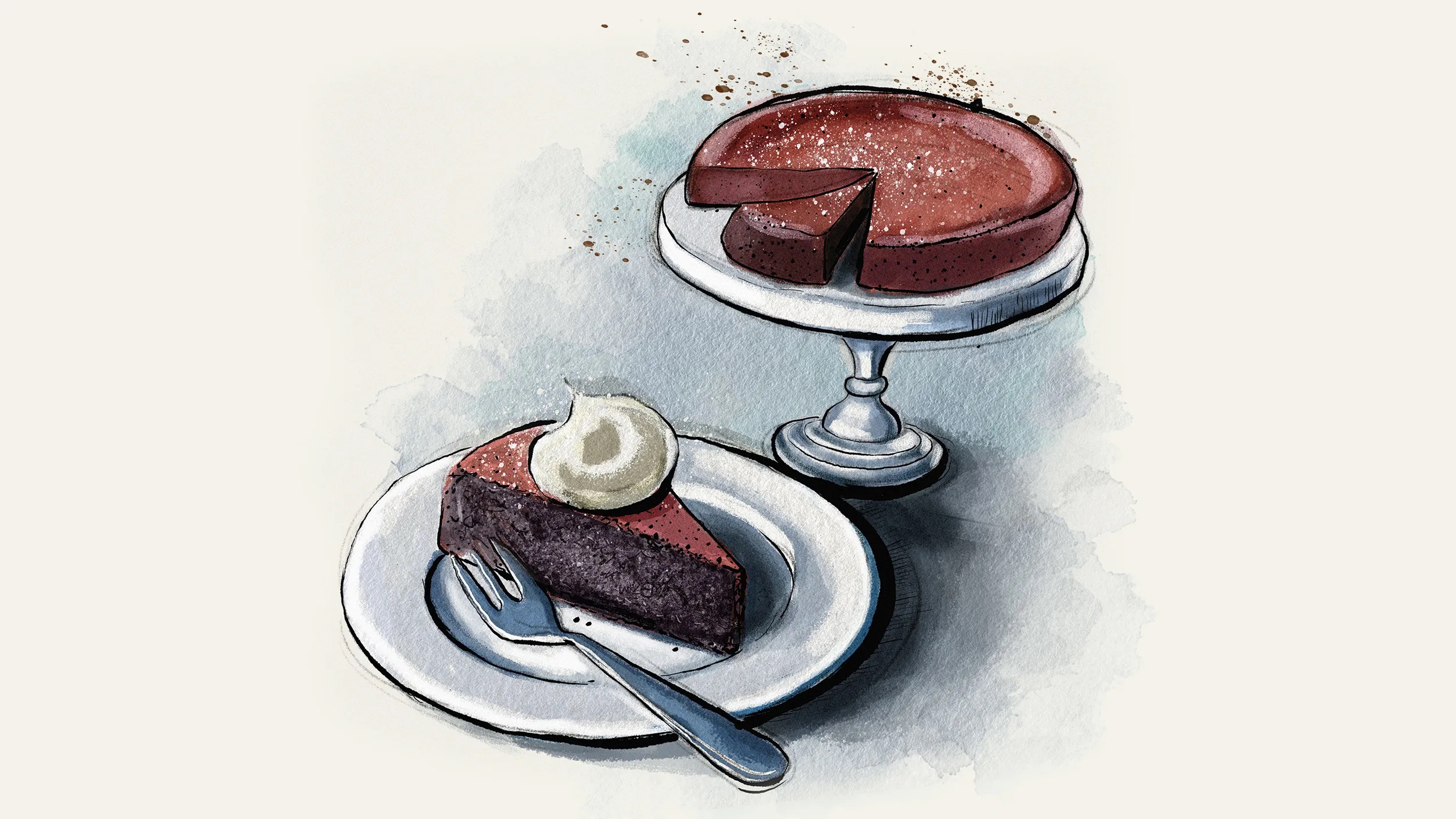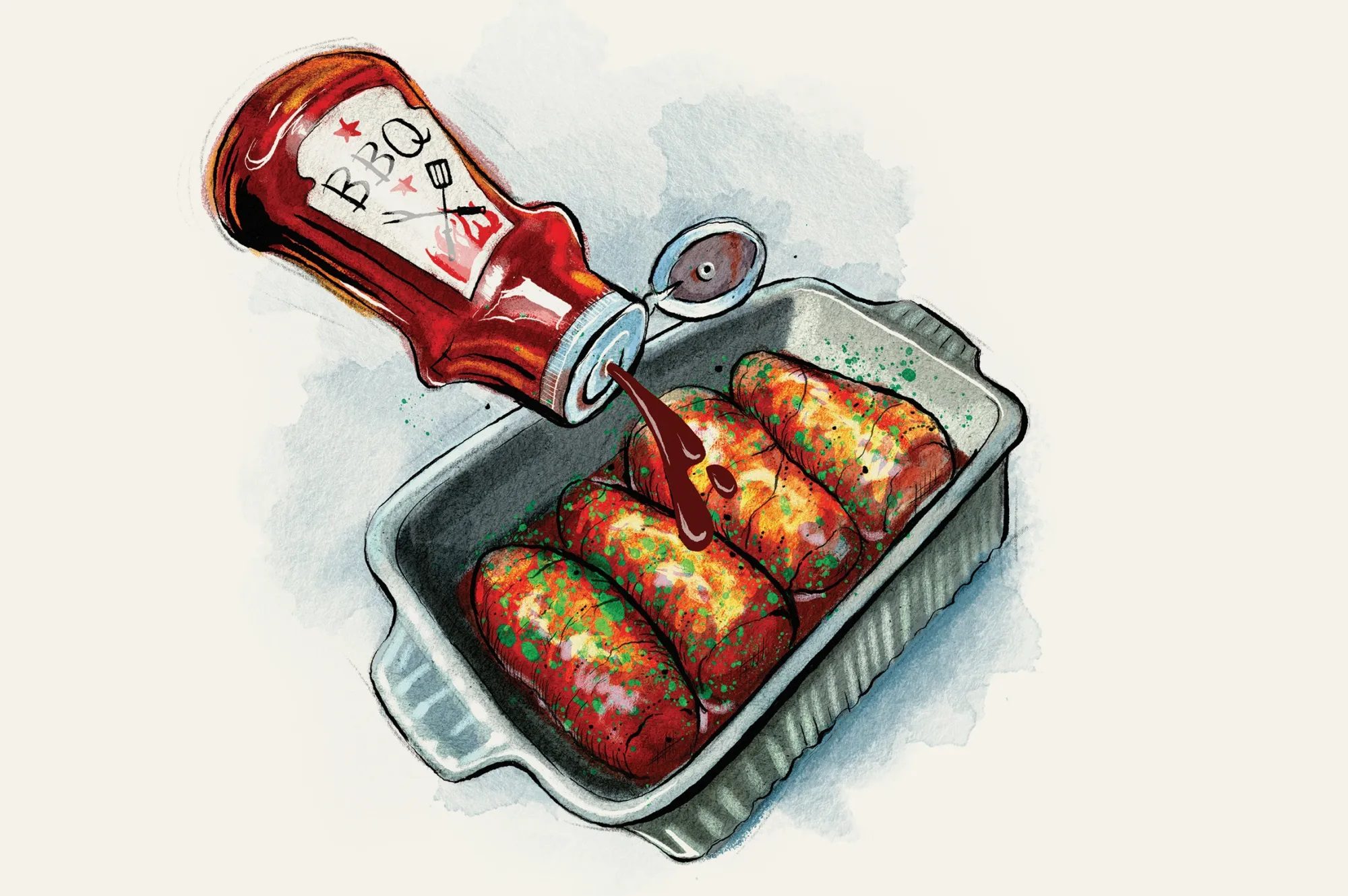This time last year, I was disgustingly well organized. Awaiting the arrival of my first baby, with a late December due date, I’d ensured everything was squirreled or squared away. I’d bought all my presents by October, wrapped them by December; I’d made my Christmas cakes and bought my Terry’s Chocolate Orange. For the first time in my life, I sent Christmas cards to everyone in my address book. I’d even made and frozen the gravy weeks in advance. It was my way of nesting — the baby could arrive when it liked. I was prepared.
It can feel that every homemade edible component of Christmas demands commitment: puddings, cakes, mincemeat, it should all be made wildly in advance, and given time to mature. Well, that level of forward-planning has gone out of the window. I now have a nearly one-year-old, who is tearing around like a wind-up terrapin, and I’m juggling him, work and general life admin. Even if I’d had the wherewithal to start my Christmas cake months ago, the chances of me remembering to feed it are slim.
Luckily, there is another answer. Its name may not commend it to you — it’s also sometimes called a “simmer and stir’ cake — but a boiled fruit cake makes up for lost time.
It’s a simple concept, really: before baking, the dried fruit is simmered together with quite a bit of fruit juice and booze, dark sugars, treacle and butter, for just ten minutes, gently bubbling and blooping away — by which time the fruit will be plump and glossy, soft and moist. It will, incidentally, smell fantastic, as if you have magicked up the spirit of Christmas in your kitchen.
But most importantly, it doesn’t need to be made in advance, and doesn’t need feeding once baked and cooled. There is no aging needed: you can make it on Christmas Eve and it will still be absolutely perfect — rich and complex, damp and spiced — on Christmas Day. I embarked on this kind of cake as a necessary experiment, but I’m now a true evangelist — I’m not sure I’ll be going back to the do-ahead version. This is a truly last-minute cake, but no lesser for that.
There are other bonuses to this method: no creaming of butter and sugar is needed, which is always a bit of a chore; and it requires a considerably shorter baking time than a standard fruit cake which, frankly, given current energy prices, is enough to recommend this cake even if it weren’t an excellent thing in its own right.
There’s also real wiggle room with the cake, as there should be: if you’re making it in the run-up to Christmas, you really don’t want to have to do a supermarket run to source a particular type of raisin or skin-on almonds when you only have blanched. As long as you have roughly the right weight of dried fruit, and of nuts, you can substitute in whatever you have or fancy. I used a combination of halved glacé cherries, sultanas, raisins, cranberries and chopped apricots and dates — but that’s just because I had them in my cupboards. Similarly, I simmer my fruit in pineapple juice and dark rum, because they’re my favorites, and my mother always used pineapple in her fruit cakes. But orange and apple juice work well, and any high-proof sweet alcohol will do: brandy and sherry are classics. You can lose the alcohol, but unlike a fed fruit cake, it will evaporate before baking, leaving the flavour.
Knowing that this isn’t a cake which is going to have to survive months in a larder (although it will, if you need it to), I’ve gone in a slightly different direction to my usual marzipan and royal icing decoration. I glaze the top of the cake with apricot jam, and then place whole dried fruit — big, fat medjool dates, pert glacé cherries and cubes of crystalized ginger — alongside pecans and walnuts, and then paint again with more jam. The fruit and nuts glow like jewels, and are significantly more elegant than my usual hastily decorated snow scene. If you are lucky enough to have access to proper candied fruit, then these, piled up proudly on top of the cake, would make it a particularly beautiful centerpiece.
Serves 10
Bakes 2 hours
– 5⅓ oz butter
– 5⅓ oz dark brown sugar
– 6¾ fl oz pineapple juice
– 3⅓ fl oz dark rum
– 2 tbsp treacle
– 1¾ oz stem ginger, finely chopped
– 1lb 12 oz mixed dried fruit
– 2 eggs
– 1 tbsp mixed spice
– 7 oz self-raising flour
– 2⅔ oz almonds, chopped
For the topping
– Mixture of dried or candied fruit and nuts
– Apricot jam
- Put the butter, sugar, fruit juice, rum, treacle, ginger and dried fruit into a large pan. Heat gently until the butter melts and bring the liquid to a simmer. Give the whole thing a good stir, and then leave slightly simmering on a low heat for ten minutes. Remove pan from the hob and leave to cool for 20-30 minutes
- Meanwhile, preheat the oven to 265°F, and line the sides and base of a deep eight-inch cake tin with two layers of baking paper
- Once the cake mixture is just warm, stir through the eggs, followed by the flour and mixed spice, and then fold in the chopped almonds
- Spoon the mix into the tin and bake for two hours, until the cake is dark golden and firm to the touch
- Allow to cool for 30 minutes, then remove from the cake tin, and leave to cool completely
- When the cake is cold, spoon three heaped tablespoons of jam into a small pan and heat gently until the jam is liquid. Pass it through a sieve, so it is completely smooth. Brush a generous amount of the passed jam on to the top of the cake, and then place whole nuts and dried or candied fruit on top of that. Brush the rest of the jam on top of the nuts and fruit to make them shine
This article was originally published in The Spectator’s UK magazine. Subscribe to the World edition here.



